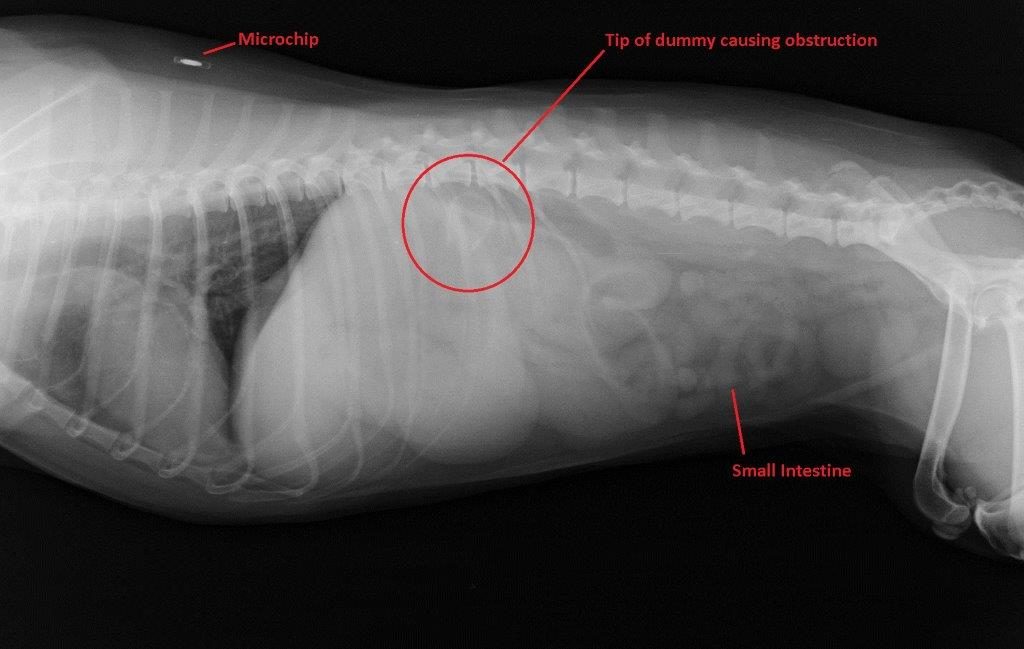When Molly wasn’t being her usual bright self, she was brought in by her concerned owner.
As she had been vomiting and showing signs of abdominal pain, her vet started suspecting that Molly had munched on something she shouldn’t have.
With a bit more questioning, it was revealed that Molly was known to eat her human sibling’s dummies. Her vet then suggested radiographs where a shape of a dummy could clearly be seen in her digestive tract!
With this information, an exploratory laparotomy was recommended for Molly to her owners.
During surgery, the suspected dummy was found and removed.
Molly is making a smooth recovery after her surgery and has been told to only munch on approved doggy treats and toys from now on!
So what is an exploratory laparotomy (ex-lap)?
It is a surgical procedure that involves opening your pet’s abdomen to ‘explore’ and examine the internal organs. Used as a diagnostic tool, it allows your vet to directly inspect the organs to assist in diagnosing the problem or to collect samples for further testing.
Ex-laps can sometimes also be a form of therapeutic treatment, like in Molly’s case where it enabled her vet to access and remove the foreign body that was found.
But for a lot of cases, ex-lap’s are not as conclusive and further investigation is needed.
When might your vet recommend this for your pet?
Your vet is likely to recommend this when the history, physical exam, blood tests and diagnostic imaging of your pet suggest abdominal disease but do not provide a confident diagnosis. Ex-laps are used in a variety of scenarios, including:
- Suspected obstruction of the digestive tract – e.g. ingestion of a foreign body (e.g. toys, clothing and… dummies)
- Biopsy collection (small tissue samples) from organs or abdominal masses with suspected disease for evaluation
- Investigating abdominal pain, vomiting and/or diarrhoea
- Investigating abdominal haemorrhage or fluid accumulation
Molly’s known history of munching on things she shouldn’t combined with her clinical signs made her a top candidate for an ex-lap.
My pet is going to have an ex-lap – What should I expect?
Prior to surgery, your pet won’t be allowed to eat for several hours. Your pet will then be under general anaesthetic for the procedure and be given intravenous fluids to maintain their hydration.
Depending on what is found during surgery, further steps may be performed such as:
- Foreign body removal
- Biopsy collection
- Organ or mass removal (e.g. pancreatitis, tumour)
How to take care of your pet after an ex-lap:
Your pet may need medication for a short period of time after surgery – follow your vet’s recommendations
Once your pet is home, limit activity (no running or playing) for the next 2 weeks
Check the incision site daily for redness, discharge, pain or swelling
If your pet is showing signs of abdominal pain, vomiting, diarrhoea and/or a penetrating abdominal injury, contact your vet immediately.


